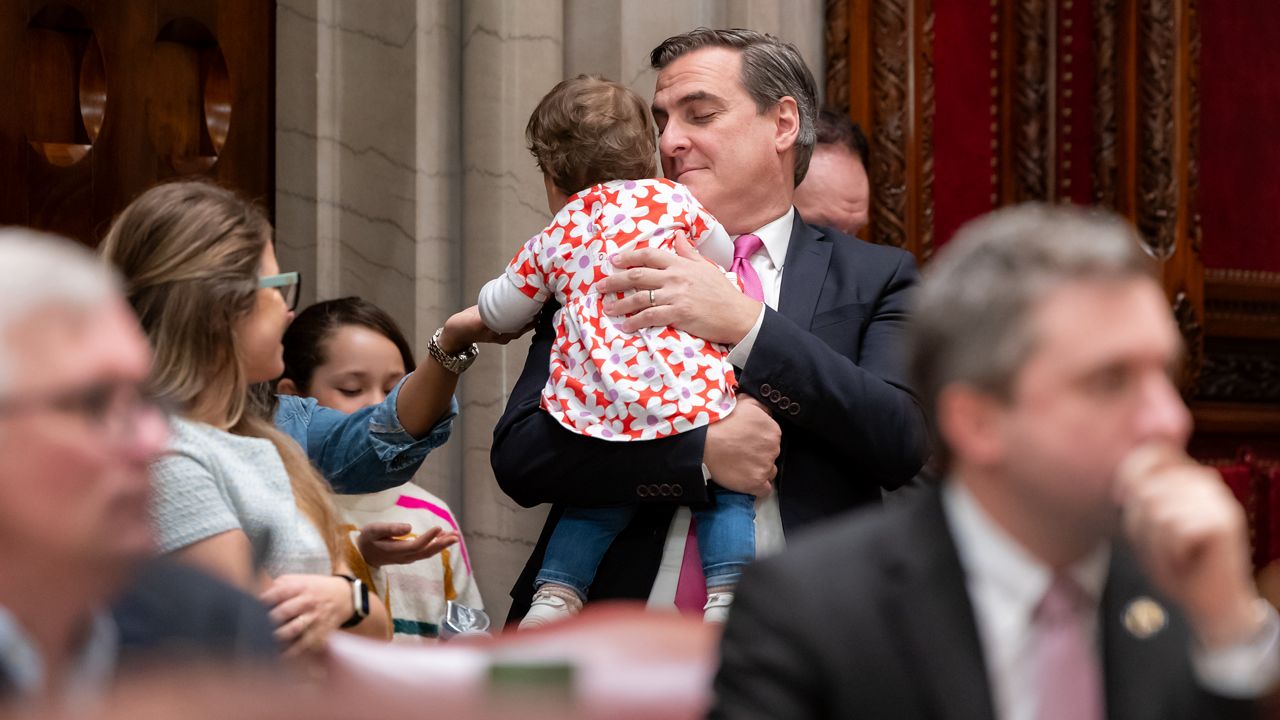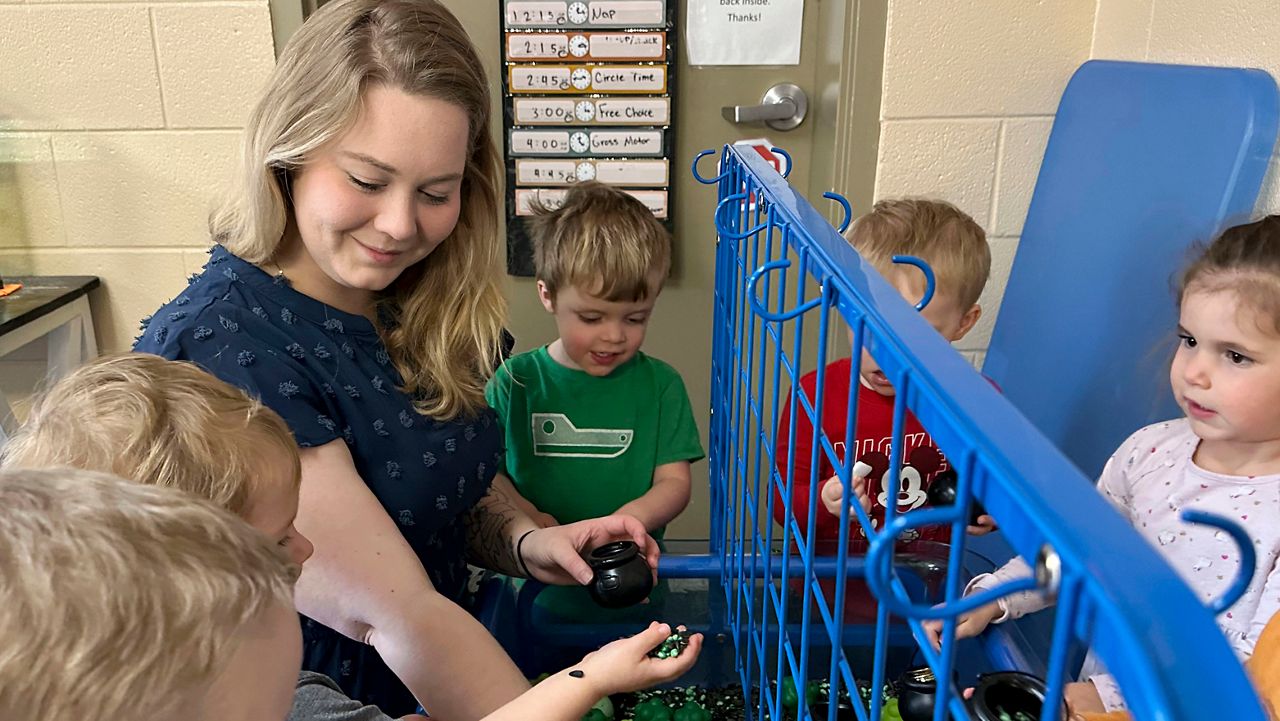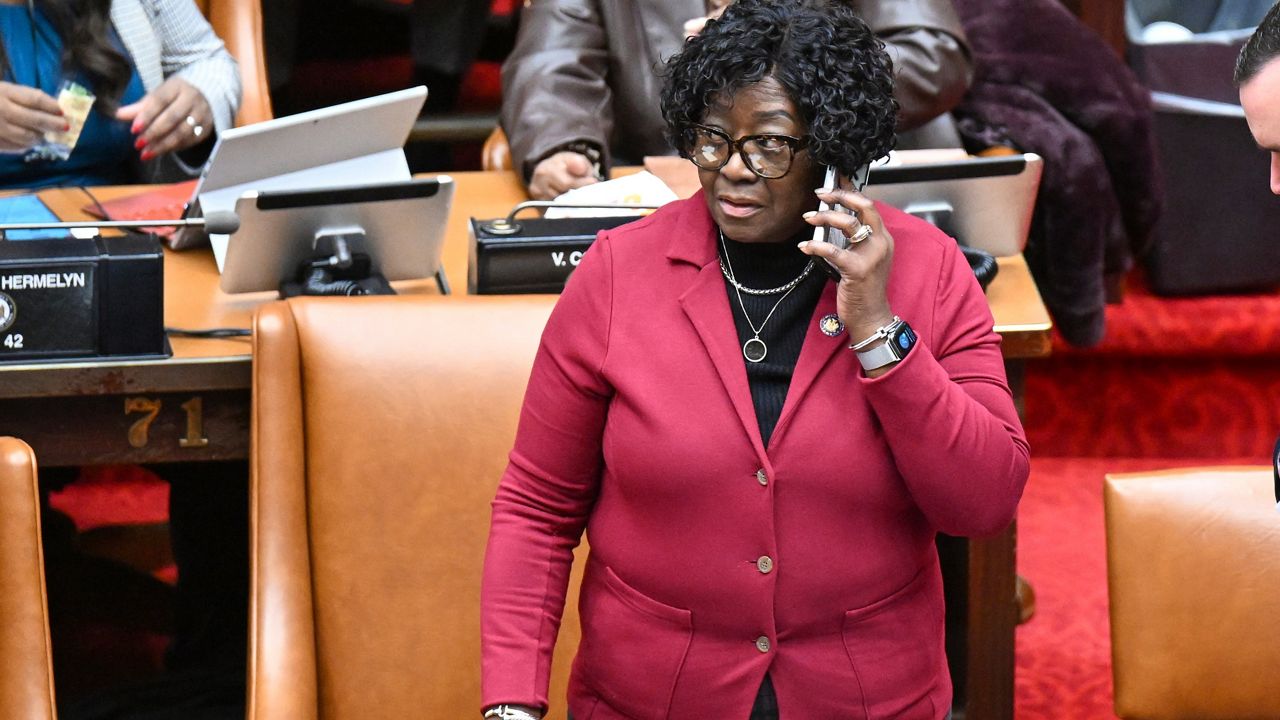Gov. Kathy Hochul told New Yorkers Monday that a budget deal will come “in the near future” as she continued to double down on making sure her proposed changes to the state’s discovery laws, or how evidence is shared with the defense, make the final package.
For now, she said the back and forth is mostly inside baseball.
“One of the stressors on the minds of everyday New Yorkers is not when the budget is going to be done,” she said. “They don’t care.”
But state Sen. Pat Fahy said it is a stressor on the minds of those in charge of calculating the budgets for local school districts, which she argued should be among the motivators to wrap things up as districts face an April 28 deadline for their property tax report card.
“They are nervous — until they see something in print, they are guessing right now,” she said.
According to the governor’s office, that’s by design. Budget Director Blake Washington explained last week that districts are being instructed to plan for Hochul’s school aid proposal, which provides at least a 2% increase in Foundation Aid.
“Then they work from there,” he said.
The governor’s proposal, complete with adjustments to the Foundation Aid formula intended to recalibrate dated methods for calculating how many low-income students a district has, helped some districts more or less than others. The state Senate and Assembly’s counterproposals recommended other small changes that would negate some negative implications of the governor’s pitch, and provide for a 3% and 2.9% increase respectively.
“This budget has provided $8 billion in increases so there is very little that you need to do to cover a lot of the bases,” he said of where negotiations over a final number could land.
With that figure, Washington said districts should be able to take a conservative approach with their budgets and adjust later if necessary.
“I don’t see it being something that should bog down school votes and things of that nature,” he said.
But given negotiations likely could produce a number in between what the governor and the Legislature are asking for, David Albert, chief communications and marketing officer at the New York State School Boards Association, stressed that knowing where the floor is only helps so much when you’re trying to craft a precise spending plan for expensive programming with out year budgets to think about.
“Budgeting really becomes difficult when you don’t know what your numbers are, it’s like if you’re doing your household budget and you don’t know how much money you’ll be bringing in,” he said. “They want to know what their exact number is going to be so they can do this in a precise way.”
He said the best course of action for districts is to be conservative in their estimates as a district can recieve more state aid than expected, while they can't go back and ask for more tax dollars than expected.
Fahy said the pause of a pre-K program in Voorheesville because of state funding is an example of how crucial aid is to districts.
"Every penny matters," she said. "That's one of our wealthier districts."
When it comes to updating the Foundation Aid formula, the Legislature recommended additional tweaks to offset potentially negative impacts of the minor changes the governor proposed to how poverty levels are measured.
Bob Lowry, deputy director of the New York State Council of School Superintendents, called those recommendations reasonable — but said not enough is being done to adjust the state’s flawed regional cost index in which the current geographic boundaries wreak havoc on numbers.
“We have just nine regions and there can be steep differences in the index for one district or another depending on which side of a boundary they are on,” he said. “We think there is more work to be done with that particular measure.”
The council has warned that while the Foundation Aid formula was being phased in, late budgets had less of an impact on district planning, but that has changed and many school officials don't have experience with the impact of a late budget in the years since the property tax cap took effect for the 2012-2013 school year.
Also a question mark is the impact of federal cuts and potential economic uncertainty on school aid and programming.
Specifically, how cuts could impact the governor’s proposal for universal school meals. The proposal is centered around filling gaps in a program that is partly funded by the state and partly at the federal level and cutting federal funding would blow an even bigger hole in the program.
Assemblymember Jessica González-Rojas who has pushed for the policy said it could factor into conversations about backfilling cuts later in the year.
“As of now we’re continuing to move forward and advance and ensure that the funding she allocated and the Assembly supports and the Senate supports for universal school meals is going to move forward,” she said, adding that she feels backfilling could be done by increasing taxes on the state’s highest earners.












